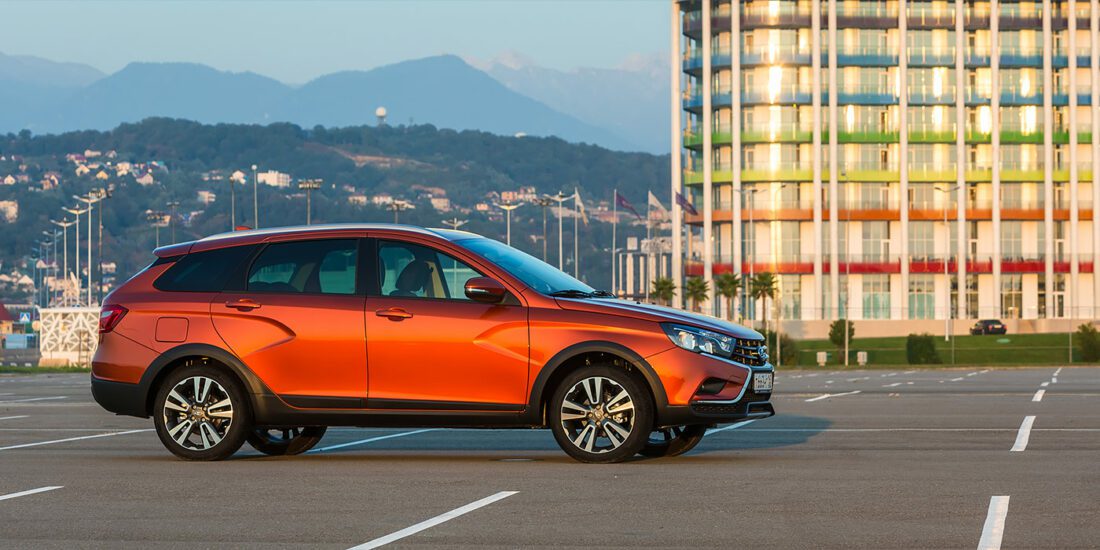
Test drive Lada Vesta SW and SW Cross
What worries Steve Mattin, why the long-awaited station wagon is not only more beautiful, but also more exciting than a sedan, how a car with a new 1,8 liter engine drives, and why Vesta SW has one of the best trunks on the market
Steve Mattin does not part with the camera. Even now, when we stand on the site of the high-rise amusement park SkyPark and look at a couple of daredevils preparing to jump into the abyss on the largest swing in the world. Steve points the camera, there is a click, the cables are disengaged, the couple flies down, and the head of the VAZ design center receives a few more bright emotional shots for the collection.
"No desire to try too?" - I urge Mattina. “I can't,” he replies. “I recently injured my arm and I need to avoid strenuous exercise now.” Hand? Designer? A cinematic scene arises in my head: AvtoVAZ shares are losing value, panic at the stock exchange, brokers are tearing their hair out.
It is impossible to exaggerate the value of the work of Mattin's team for the plant - it was he and his colleagues who created an image that is not ashamed to bring to the top of the market for a reason other than the ultra-low price. Whatever one may say, but the technical component for Togliatti cars is a little secondary - the market accepted the expensive Vesta because he really liked it, and first of all, because it is good and original in appearance. And partly also because it has its own, and in Russia it still works.
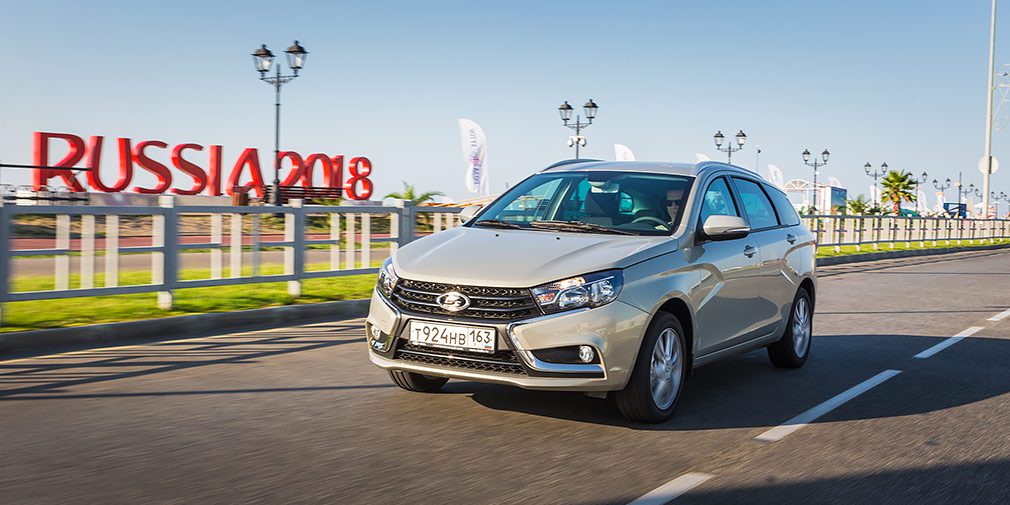
But our station wagon is a risky thing. There is a need for them, but there is no culture of using such machines in Russia. Only a really outstanding machine can break the old trend, which can declare the rejection of the image of a utilitarian "barn". Mattin's team turned out exactly this: not quite a station wagon, not at all a hatchback and certainly not a sedan. Vazovsky SW stands for Sport Wagon, and this is, if you like, an inexpensive domestic Shooting Brake. Moreover, in our conditions, the SW Cross version with a protective body kit, contrasting color and a clearance of such a magnitude that most compact crossovers will envy is more responsible for the sports-utilitarian style in our conditions.
The new bright orange color scheme, which was developed specifically for the Cross version, is called "Mars", and standard station wagons are not painted in it. Alterative 17-inch wheels also have their own, special style, as well as a double exhaust pipe. A black plastic body kit around the perimeter covers the bottom of the bumpers, wheel arches, sills and lower parts of the doors. But the main thing is the ground clearance: under the bottom, the Cross has an impressive 203 mm versus the already considerable 178 mm for the Vesta sedans and station wagons. And it's good that marketers insisted on rear disc brakes, although there was little point in them. Behind the big beautiful discs, the drums would look somewhat archaic.
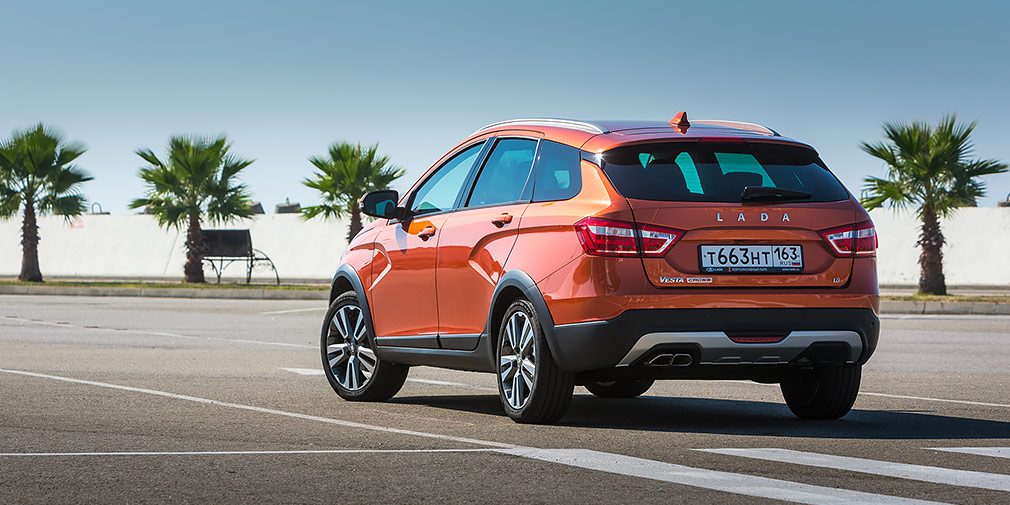
Against the background of the Cross version, the standard Vesta SW looks rustic, and this is normal - it is the Cross that should finally explain to the consumer that the station wagon is cool. But a pure generalist and a work of art in itself. If only because it is made with a soul and at no special cost. Gray "Carthage" fits this body perfectly - it turns out a restrained and interesting image. The station wagon has a minimum of original body parts, and the basis is completely unified. So much so that he and the sedan have the same length, and the taillights at the factory in Izhevsk are taken from the same box. The floor and opening of the trunk have not changed, although in some places the body of the five-door had to be slightly strengthened due to the absence of a rigid panel in the luggage compartment. For the station wagon, the plant mastered 33 new stamps, and as a result, the rigidity of the body did not suffer.
The station wagon has a higher roof, but this is hardly noticeable. And it's not just the bevel of the rear window. Sly Mattin deftly lowered the roofline down just behind the rear doors, at the same time visually tearing it off from the body with a black insert. The stylists called the visible piece of the rear pillar a shark fin, and it came from the concept to the production car unchanged. Vesta SW, especially in the performance of Cross, generally differs little from the concept, and for such decisiveness the stylists and designers of VAZ can only be applauded.

It is also nice that in Togliatti they were not afraid to paint the salon in the same way. A combined two-tone finish is available for the Cross, and not only in body color, but also any other. In addition to colored overlays and bright stitching, cute overlays with a volumetric pattern appeared in the cabin, and VAZ employees offer a choice of several options. The instruments are also designed to match the interior decoration, and their backlighting now always works when the ignition is turned on.
Rear passengers will be the first to feel the benefits of a higher roof. Not only did Vesta initially make it possible to sit at ease behind a 180 cm driver, taller customers will not have to bend down in the back of the station wagon, although we are talking about a modest additional 25 millimeters. There is now an armrest in the back of the rear sofa, and on the back of the front armrest box (also a novelty) there are keys for heating the rear seats and a powerful USB port for charging the gadget - solutions that will then be transferred to the sedan.
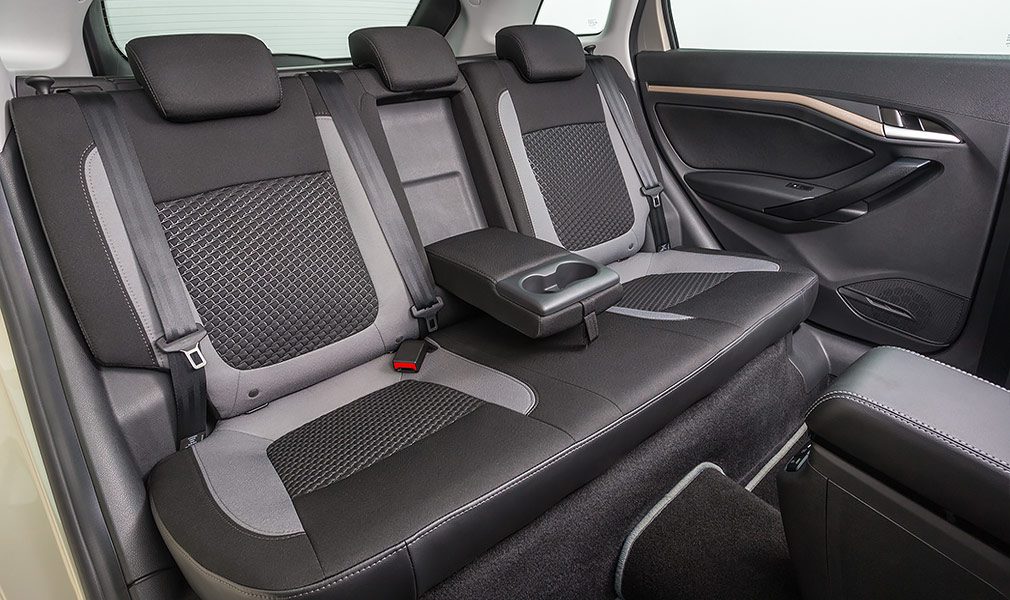
The wagon generally brought a lot of useful things to the family. For example, an organizer, a nap trim and a microlift for the glove box - a compartment that used to just roughly drop to your knees. The rear-view camera of the proprietary media system is now able to turn the parking markings following the steering wheel rotations. A fin with a full set of antennas has appeared on the roof, the bonnet seal has changed, the gas tank flap is now with a spring mechanism and a central locking. The sound of the turn signals has become more noble. Finally, it was the station wagon who was the first to receive the familiar and understandable button for opening the trunk on the fifth door, even if instead of the salon one.
The compartment behind the tailgate is not at all a record - according to official figures, from the floor to the sliding curtain, the same 480 VDA-liters as in the sedan. And even those can be counted only taking into account all the additional compartments and niches. But they stopped measuring trunks with conventional bags of potatoes and refrigerators even in Togliatti - instead of a huge hold, Vesta offers a well-organized space and a set of branded accessories, for which you want to pay extra right in the dealer's salon.
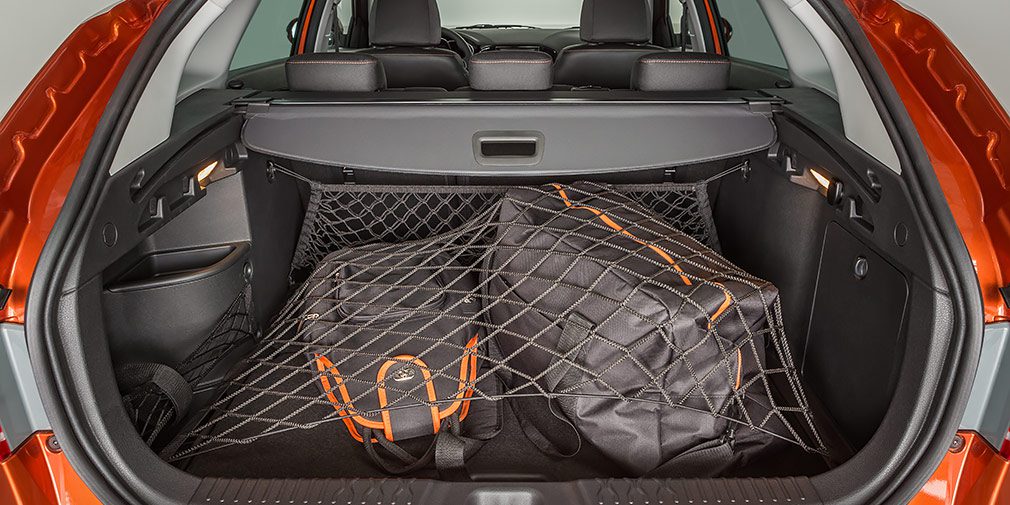
Half a dozen hooks, two lamps and a 12-volt socket, as well as a closing niche in the right wheel arch, an organizer with a shelf for small items, a mesh and a niche for a washer bottle with a Velcro strap on the left. There are eight attachment points for the luggage nets, and the nets themselves are two: floor and vertical behind the seat backs. Finally, there is a two-level floor.
On the top floor, there are two removable panels, under which two foam organizers are all interchangeable. Below is another raised floor, under which a full-size spare wheel is attached and - surprise - another roomy organizer. All 480 liters of volume are sliced, served and served at their best. The backrest folds in parts according to the standard scheme, flush with the upper raised floor, albeit at a slight angle. In the limit, the trunk holds a little more than 1350 liters, and it's already hard to imagine the notorious sacks of potatoes here. It's more about skis, bicycles and other sports equipment.
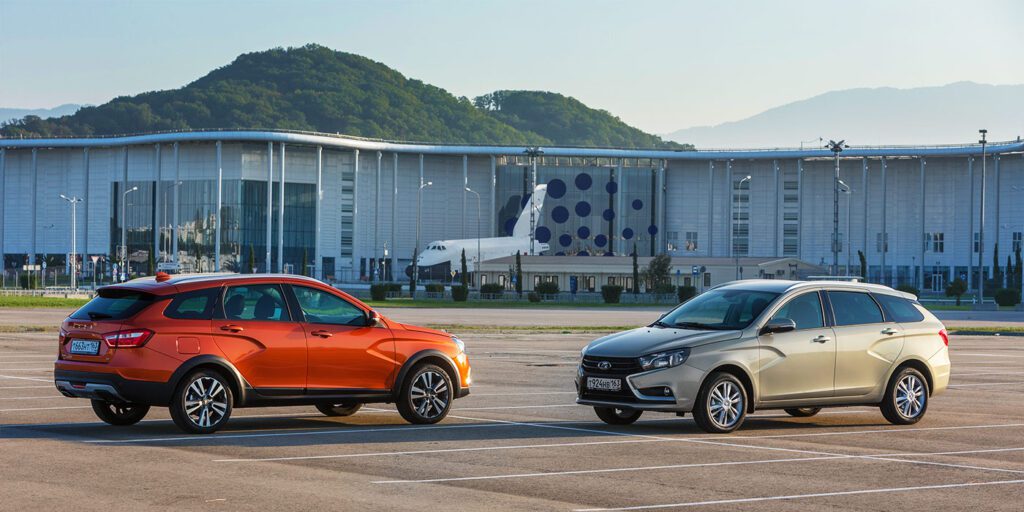
Vazovtsy argue that it was not necessary to seriously reshape the chassis of the station wagon. Due to the redistribution of mass, the characteristics of the rear suspension changed slightly (the rear springs of the station wagon were increased by 9 mm), but this is not felt on the go. Vesta is recognizable: a tight, slightly synthetic steering wheel, insensitive at low cornering angles, modest rolls and understandable reactions, thanks to which you want and can drive along the Sochi serpentines. But the new 1,8-liter engine on these tractors is not very impressive. Up Vesta is strained, requiring a downshift, or even two, and it's good that the gearshift mechanisms work very well.
The VAZ employees did not finish their gearbox - Vesta still has a French five-speed "mechanics" and a well-oiled clutch. In terms of the convenience of starting off and shifting gears, the unit with a 1,8 liter engine is superior to the base unit, if only because everything here is without vibrations and works more clearly. The gear ratios are also well chosen. The first two gears are good for city traffic, and the higher gears are highway, economical. The Vesta 1,8 rides confidently and accelerates well in the mid-range zone, but it does not differ in powerful traction at the bottom or in a cheerful spin at high revs.
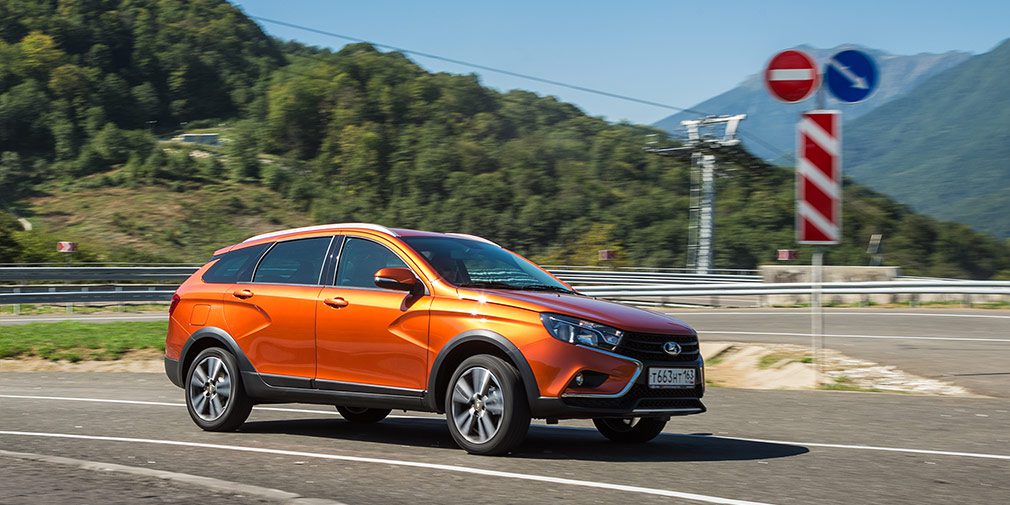
The main surprise is that the bright Vesta SW Cross rides juicier, even losing some symbolic fractions of a second to the standard station wagon in dynamics. The thing is, she actually has a different suspension setup. The result is a very European version - more elastic, but with a good feel of the car and an unexpectedly more responsive steering wheel. And if the standard station wagon works out bumps and bumps, although noticeably, but without going over the edge of comfort, then the Cross setting is clearly more asphalt. You want to turn the turns of the Sochi serpentines on it again and again.
This does not mean that a station wagon with a 20-centimeter ground clearance has nothing to do on a dirt road. On the contrary, Cross jumps over the stones without breaking the suspension, perhaps shaking the passengers a little more. And it easily jumps over the bends abruptly than those where the locals still pass by in their cars, without clinging to their plastic body kit. The standard SW in these conditions is a little more comfortable, but it requires a little more careful choice of the trajectory - I don't really want to scratch a beautiful X-face on stones.
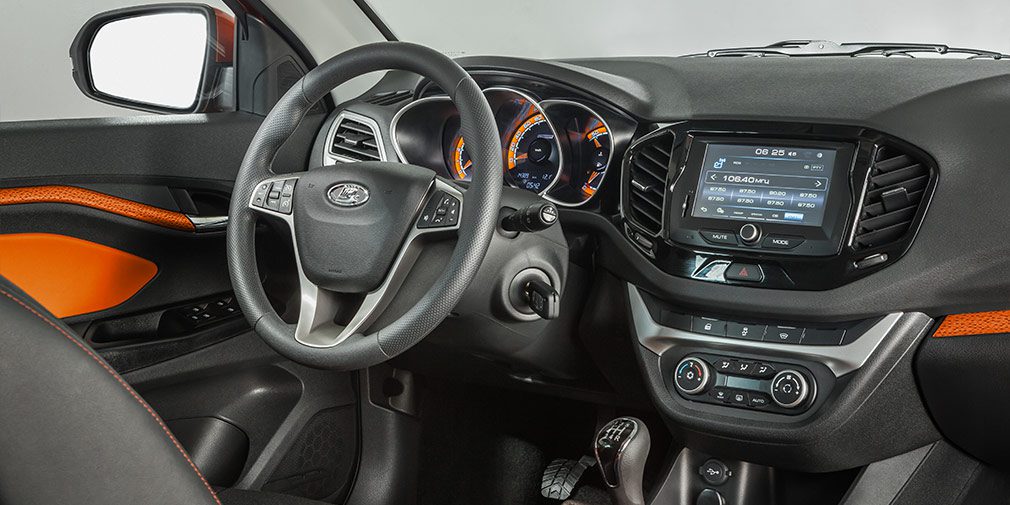
Low-profile 17-inch wheels are a privilege exclusively of the Cross version, while the standard Vesta SW has 15 or 16-inch wheels. As well as rear disc brakes (they are put on standard station wagons only in a set with a 1,8 engine). Basic Vesta SW kit for $ 8. corresponds to the Comfort configuration, which already has a very decent set of equipment. But it is worth paying extra for the performance of Luxe at least for the sake of a double trunk floor and a full-fledged air conditioning system, which the sedan once lacked. Navigator with rear view camera will appear in the Multimedia package, which is a minimum of $ 439. The 9 L motor adds another $ 587 to the price.
The SW Cross off-road wagon is offered by default in the Luxe version, and this is a minimum of $ 9. And a car with a 969 liter engine with a maximum set, which includes heated windshield and rear seats, a navigator, a rear view camera and even LED interior lighting, costs $ 1,8, and this is not the limit, because the range also includes “ robot". But with him, the car seems to lose its driver excitement a little, and therefore we just keep such versions in mind for now.
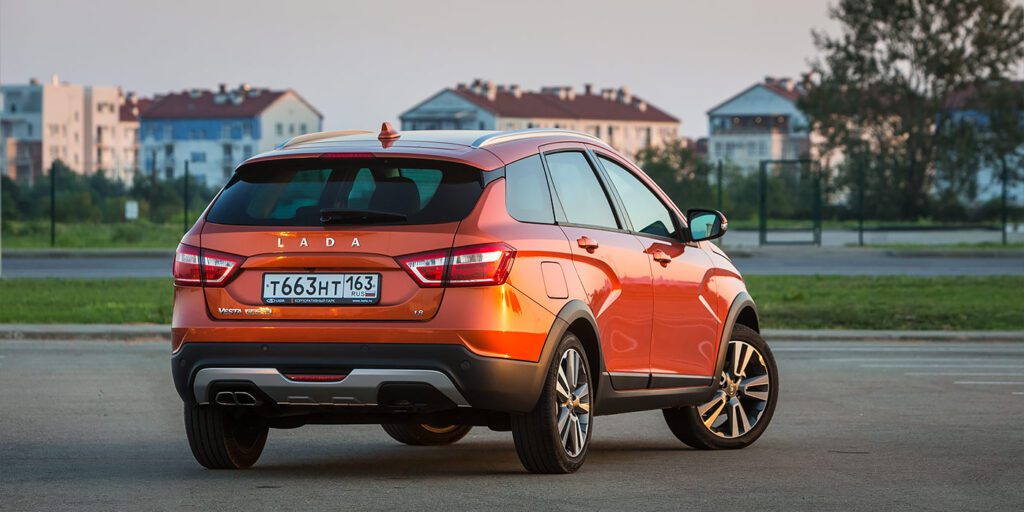
Steve Mattin flies back to Moscow as an ordinary "economy" and has fun with the processing of his own photographs. Tilts the horizon, changes the color of the sky, and turns the color and brightness sliders. In the center of the frame there is a Vesta SW Cross in Mars color, obviously the brightest product of the Lada brand. Even he was not tired of her appearance. And now you can clearly see that everything is in order with his hands.
| Body type | Universal | Universal |
| dimensions (length / width / height), mm | 4410/1764/1512 | 4424/1785/1532 |
| Wheelbase, mm | 2635 | 2635 |
| Curb weight, kg | 1280 | 1300 |
| engine's type | Gasoline, R4 | Gasoline, R4 |
| Working volume, cubic meters cm | 1596 | 1774 |
| Power, hp with. at rpm | 106 at 5800 | 122 at 5900 |
| Max. cool. moment, Nm at rpm | 148 at 4200 | 170 at 3700 |
| Transmission, drive | 5th st. INC | 5th st. INC |
| Maksim. speed, km / h | 174 | 180 |
| Acceleration to 100 km / h, from | 12,4 | 11,2 |
| Fuel consumption (city / highway / mixed), l | 9,5/5,9/7,3 | 10,7/6,4/7,9 |
| Cargo space, l | 480/1350 | 480/1350 |
| Price from, $. | 8 439 | 10 299 |